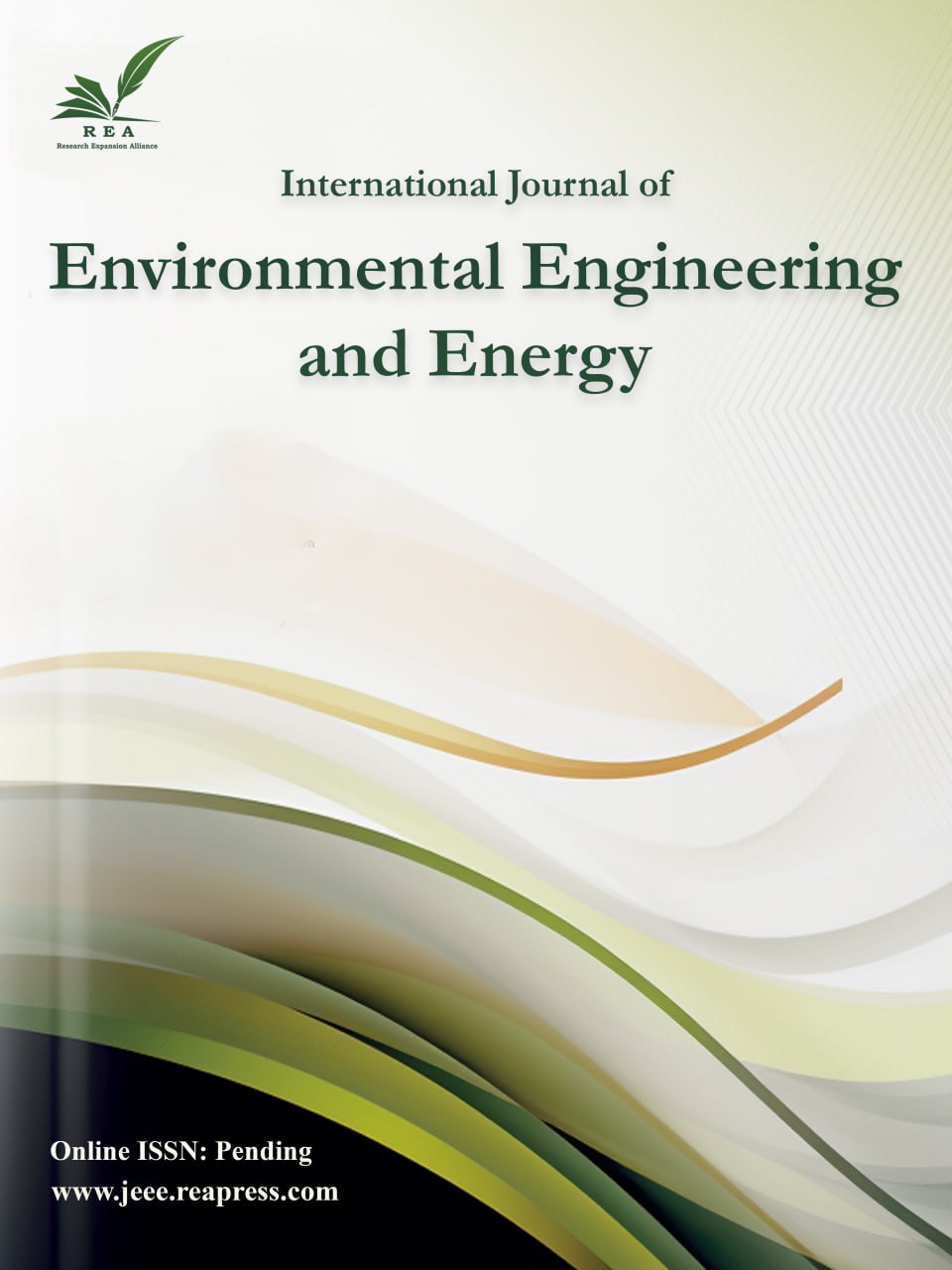Comparative Performance Study of Kolanut Biodiesel and Conventional Fossil Diesel
Abstract
The research studied the difference in performance between synthesised bio-lubricant from kolanut and conventional fossil diesel. The kolanut oil was extracted from kolanut seeds by soxhlet extraction using petroleum ether as the solvent, after which the physiochemical characterisation of the oil was done to determine its suitability for use as biodiesel. This characterised oil was modified to have superior low-temperature properties through the process of esterification. The modified oil was further synthesised to biodiesel blends through a two-stage trans-esterification process, after which appropriate additives were infused through a blending of the developed biodiesel and the petro-diesel fuels in the following volume ratios: 100:0, 80:20, 60:40, 40:60, and 20:80 (B100, B80, B60, B40, B20) respectively. The synthesised blends of bio-lubricant were subjected to performance analysis in a C. I diesel engine test-bed. The conventional fossil diesel was also subjected to the same test. From the overall analysis, it was shown that biodiesel produced from kolanut pod oil has the potential to be an alternative fuel to conventional Compression Ignition (CI) engines without any further modifications to the engines. The tests revealed that the variation of engine torque with speed for varying speeds and constant load test conditions for the biodiesels, the blends and the conventional diesel fuel show that the biodiesels, due to their higher cetane numbers, have higher torque, higher braking power, higher thermal efficiency with lower calorific values compared to the conventional petro-diesel fuel. The fossil diesel fuel did better than the biodiesel blend when considering the Specific Consumption (SFC) with brake power, but holistically, it is seen that the investigated biodiesel samples performed marginally better than the conventional petro-diesel fuel analysed.
Keywords:
Performance, Physiochemical characterisation, Biodiesels, Additives , Two stage trans-esterification, Fossil dieselReferences
- [1] [1] Ofoefule, A. U., Ibeto, C. N., Okoro, U. C., & Onukwuli, O. D. (2013). Biodiesel production from tigernut (Cyperus esculentus) oil and characterization of its blend with petro-diesel. Physical review & research international, 3(2), 145–153. http://archive.paparesearch.co.in/id/eprint/1698
- [2] [2] Iloamaeke, I. M., Onuigbo, C. C. Umedum, L. N., Umeobika, C. U. and O. P. U. (2016). Production and characterization of biodiesel from the seed of dacryodes edulis (African pear). International journal of current research, 8(1), 25230–25234. https://www.journalcra.com/article/production-and-characterization-biodiesel-seed-dacryodes-edulis-african-pear
- [3] [3] Siddeg, A. B., Adam, U., Jaat, N., Khalid, A., Sapit, A., Mohd, S., & Jalal. M. A. (2022). Analysis of the influences of biodiesel on performance and emissions of a diesel engine. Journal of automotive powertrain and transportation technology, 2(2), 1–8. DOI: 10.30880/japtt.2022.02.02.001
- [4] [4] Boerlage, G. D., & Broeze, J. I. (1994). Determination of saponification, iodine and peroxide value. Progress report of volunteer group for fuel research society of automotive engineer, 21, 231–232.
- [5] [5] Balat, M., & Balat, H. (2010). Progress in biodiesel processing. Applied energy, 87(6), 1815–1835. DOI: 10.1016/j.apenergy.2010.01.012
- [6] [6] Buyukkaya, E. (2010). Effects of biodiesel on a DI diesel engine performance, emission and combustion characteristics. Fuel, 89(10), 3099–3105. DOI: 10.1016/j.fuel.2010.05.034
- [7] [7] Bull, O. S., & Obunwo, C. C. (2014). Bio-diesel production from oil of orange (Citrus sinensis) peels as feedstock. Journal of applied sciences and environmental management, 18(3), 371–374. DOI: 10.4314/JASEM.V18I3.2
- [8] [8] Babu, K., & Devaradjane, G. (2003). Vegetable oils and their derivatives as fuels for ci engines: an overview. SAE technical papers, 112, 406–419. DOI: 10.4271/2003-01-0767
- [9] [9] Knothe, G. (2001). Analytical methods used in the production and fuel quality assessment of biodiesel. Transactions of the asae, 44(2), 193. DOI: 10.13031/2013.4740
- [10] [10] Hull, A., Golubkov, I., Kronberg, B., & van Stam, J. (2006). Alternative fuel for a standard diesel engine. International journal of engine research, 7(1), 51–63. DOI: 10.1243/146808705X30549
- [11] [11] Haryanto, A., Saputra, T. W., Telaumbanua, M., & Gita, A. C. (2020). Application of artificial neural network to predict biodiesel yield from waste Frying oil transesterification. Indonesian journal of science and technology, 5(1), 62–74. https://ejournal.kjpupi.id/index.php/ijost/article/view/111/104
- [12] [12] Ghobadian, B., Rahimi, H., Nikbakht, A. M., Najafi, G., & Yusaf, T. F. (2009). Diesel engine performance and exhaust emission analysis using waste cooking biodiesel fuel with an artificial neural network. Renewable energy, 34(4), 976–982. DOI: 10.1016/j.renene.2008.08.008
- [13] [13] He, J., Yang, H., He, L., & Zhao, L. (2021). Neural networks based on vectorized neurons. Neurocomputing, 465(20), 63–70. DOI: 10.1016/j.neucom.2021.09.006
- [14] [14] Eastop, T. D., & Mc Conkey, A. (2009). Applied thermodynamics for engineering technologists (Fifth edition). India: pearson education limite. https://pdfcoffee.com/download/applied-thermodynamics-for-engineering-technologists-5ed-by-eastop-and-mcconkeypdf-pdf-free.html
- [15] [15] Agarwal, D., Kumar, L., & Agarwal, A. K. (2008). Performance evaluation of a vegetable oil fuelled compression ignition engine. Renewable energy, 33(6), 1147–1156. DOI: 10.1016/j.renene.2007.06.017
- [16] [16] Yousef, A. M., El-Maghlany, W. M., Eldrainy, Y. A., & Attia, A. (2018). New approach for biogas purification using cryogenic separation and distillation process for CO2 capture. Energy, 156(C), 328–351. DOI: 10.1016/j.energy.2018.05.106
- [17] [17] Ahmadkhaniha, D., Heydarzadeh Sohi, M., Zarei-Hanzaki, A., Bayazid, S. M., & Saba, M. (2015). Taguchi optimization of process parameters in friction stir processing of pure Mg. Journal of magnesium and alloys, 3(2), 168–172. DOI: 10.1016/j.jma.2015.04.002
- [18] [18] Igbani, S., & Bebeteidoh, O. L. (2015). Experimental investigation of API gravity of gasoline in dispensing stations and its effects on gasoline engines in Bayelsa state, Nigeria. International journal of applied science and technology, 5(4). https://www.researchgate.net/publication/281642028_experimental_investigation_of_api_gravity_of_gasoline_in_dispensing_stations_and_its_effects_on_gasoline_engines_in_bayelsa_state_nigeria
- [19] [19] Lapuerta, M., Herreros, J. M., Lyons, L. L., García-Contreras, R., & Briceño, Y. (2008). Effect of the alcohol type used in the production of waste cooking oil biodiesel on diesel performance and emissions. Fuel, 87(15), 3161–3169. DOI: 10.1016/j.fuel.2008.05.013
- [20] [20] Betiku, E., Osunleke, A. S., Odude, V. O., Bamimore, A., Oladipo, B., Okeleye, A. A., & Ishola, N. B. (2021). Performance evaluation of adaptive neuro-fuzzy inference system, artificial neural network and response surface methodology in modeling biodiesel synthesis from palm kernel oil by transesterification. Biofuels, 12(3), 339–354. DOI: 10.1080/17597269.2018.147298
- [21] [21] Lotero, E., Liu, Y., Lopez, D. E., Suwannakarn, K., Bruce, D. A., & Goodwin, J. G. (2005). Synthesis of biodiesel via acid catalysis. Industrial & engineering chemistry research, 44(14), 5353–5363. DOI: 10.1021/ie049157g
- [22] [22] Ramadhas, A. S., Jayaraj, S., & Muraleedharan, C. (2004). Use of vegetable oils as I.C. engine fuels—A review. Renewable energy, 29(5), 727–742. DOI: 10.1016/j.renene.2003.09.008
- [23] [23] Patil, V., & Agrawal, A. (2014). In cylinder combustion analysis of DI diesel using experimental and CFD approach. International journal of engineering trends and technology, 14(5), 249–254. DOI: 10.14445/22315381/IJETT-V14P249
- [24] [24] Prakash, S. V, Kulkarni, G., & Rajeesh S, R. S. (2016). CFD analysis of biofuel (cnsl blended with diesel) run diesel engine. International journal of research in engineering and technology. https://www.researchgate.net/publication/314948589_CFD_Analysis_of_biofuel_cnsl_blended_with_diesel_run_diesel_engine


